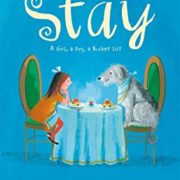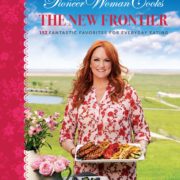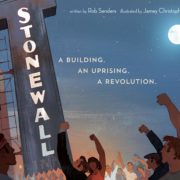Pride: The Story of Harvey Milk and the Rainbow Flag (Rob Sanders, Illustrated by Steven Salerno), by Lisa E. Brown
Although I don’t read a lot of children’s storybooks, one occasionally catches my eye with its use of artwork or subject. The latter was the case with Pride: the Story of Harvey Milk and the Rainbow Flag, written by Rob Sanders and illustrated by Steven Salerno.
This slim volume opens with some brief background of then-unknown Harvey Milk, relating his hopes and the crux of Pride: Harvey dreamed that everyone “even gay people” would have equality. He dreamed that he and his friends would be treated like everyone else. He dreamed that one day, people would be able to live and love as they pleased.
Harvey goes on to find success as a politician, winning a seat on the San Francisco Board of Supervisors in 1977 and becoming one of the United States’ first openly gay people elected to public office.
He and his friends plan protests to highlight inequality and unfair laws. Before one such march, Harvey has an idea. Deciding that the gay community needs a symbol, he talks to artist and Chanute, Kan., native Gilbert Baker, who suggests a flag. Gilbert’s vision culminates in the creation of a flag with eight colorful stripes, a rainbow flag.
The flag was first unfurled on June 25, 1978, at the Gay Freedom Day Parade in San Francisco. It was â rainbow, as bright and unique as the men and women who walked behind it.
Sadly, five months later, on November 27, 1978, five months after the debut of the rainbow flag, Harvey Milk and Mayor George Moscone are assassinated by former city supervisor Dan White. That night, there is no flag, no protests, only thousands of silent, grieving people marching with burning candles and mourning the loss of two lives.
Harvey’s death didn’t slow the momentum of the rainbow flag, however.
After a couple alterations “ hot pink and turquoise are removed, leaving six stripes, and indigo is changed to royal blue” the flag is mass produced and begins to appear everywhere.”It was a flag of equality” author Rob Sanders writes. “More and more people began to think of the flag as their flag. And they began to feel pride. They began to have hope.”
A 30-foot wide, mile-long rainbow flag is even carried by 10, 000 people during a New York City Pride celebration in 1994. And on June 26, 2015, when the United States Supreme Court rules that gay and lesbian couples have the constitutional right to marry, the White House is lit with the colors of the rainbow flag.
Pride: The Story of Harvey Milk and the Rainbow Flag moved me. Like many children’s books these days, it doesn’t shy away from tough, potentially divisive topics such as gay rights and death. The writing is as vibrant and inspiring as the colors of the rainbow flag, with strong action verbs and alliteration. It is poignant, as well. The illustrations are colorful and realistic.
By the way, if you’re looking for more information on Harvey Milk, you can find in the adult DVD collection the fine documentary The Times of Harvey Milk or the motion picture Milk for which Sean Penn won a Best Actor Academy Award. The Joplin Public Library also has an excellent collection of LGBTQ+ books for all ages, among them Cleve Jones’ memoir When We Rise: My Life in the Movement









